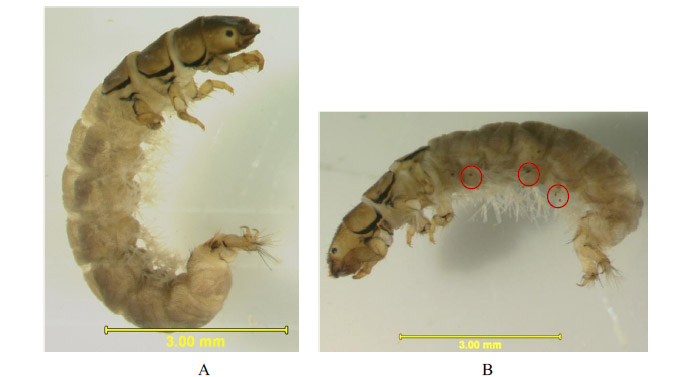Environmental Risk Assessment of Cadmium in Stream Sediments and Aquatic Insects (Hydropsychidae: Trichoptera) in Streams Contaminated in Mining Areas
Main Article Content
Abstract
The use of the aquatic insect family Hydropsychidae and gill abnormalities in
hydropsychid larvae as an environmental risk assessment in streams contaminated by mining
activity were conducted in Mae Tao and Mae Ku creek, Mae Sot District, Tak Province. Seven
sampling sites were tested during February to December 2011. In total, 2,584 individual
hydropsychid larvae belonging to five genera were recorded in this study. The percentage of
individuals with at least some abnormality (HAI) was the highest in MT5 (69.42%) and
hydropsychid gill abnormality indice (HYI) was the highest in MT5 (8.22) where the stream
flows through mining and agriculture areas. PCA (Principal Correspondence Analysis) indicated
the genus Cheumatopsyche, Hydropsyche, Potamyia were positively correlated to sulphate at
the site MT5, but were negatively correlated with water temperature, electrical conductivity,
total dissolved solids, alkalinity and ammonia-nitrogen at site MT3 and MK8. The genus
Macrostemum was positively correlated with dissolved oxygen, pH of water, water turbidity,
and sulphate at site MT2, MT4, and MK2, but was negatively correlated with air temperature
and orthrophosphate at site MT1. The outcome of this study may assist policy making decisions
to ameliorate the harmful effects of urbanization by incorporating insect taxa responsiveness
into future designs of urban development.
Article Details
Published articles are under the copyright of the Environment and Natural Resources Journal effective when the article is accepted for publication thus granting Environment and Natural Resources Journal all rights for the work so that both parties may be protected from the consequences of unauthorized use. Partially or totally publication of an article elsewhere is possible only after the consent from the editors.

